APPLYING BASIC CONCEPTS OF THE ELEMENTS THAT COMPOSE A DESIGN #figurative art #designtheory #art #drawn #urbanart
WELCOME ONCE MORE!
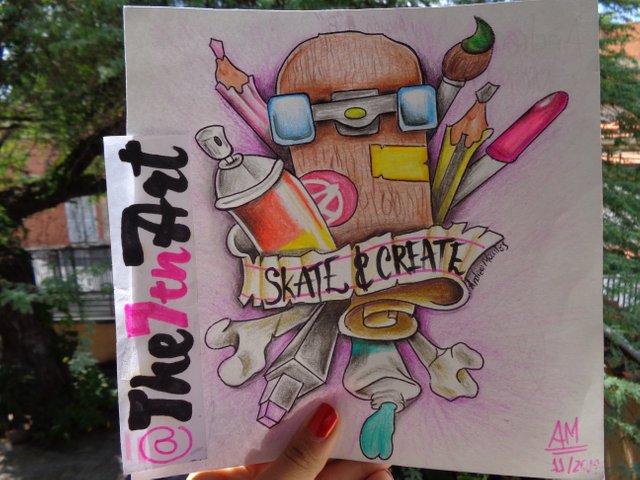
I really like to show more than just the drawing, talking and explaining what each protagonist drawing is about in my works, presenting definitions and some curiosities that I probably did not know, I find it quite interesting, since I do not only show them content visual if not also I try that you learn a little more of all that ...
BASIC CONCEPTS
The form: It is the external appearance of things. Through it you get information about the appearance of everything that surrounds us.
Two-dimensional shape: They are represented on a flat support, and with only two dimensions (height and width).
Three-dimensional shape: They are those that have volume, that is, that occupy a place in space and have three dimensions (height, width and depth).
Natural forms: They are those that make up the natural environment.
Artificial forms: They are all those created by human beings.
Simple forms: Are those formed by one or few elements. As an example, a nut.
Complex forms: They are those that are formed by many simple forms. As an example, a car.
Figurative Forms: Are those concrete forms normally used to express ideas of images with existing forms, but modify them according to the composition.
The plane: It is an infinite surface, formed by infinite points that follow the same direction, that is to say, there are lines that are totally included in it.
Space: That place where matter is contained. Understand as a matter any object that occupies a surface.
Depth: The distance of an element with respect to a horizontal reference plane when said element is below the reference.
Scenographic space: It is the resulting set of visual elements that constitute realistically, ideally or symbolically the place where an action takes place and that make up a scenic production or staging.
Applying these concepts to the drawing we could say that ...
Form: The external appearance of the elements put on paper. In this case the delineated.
Two-dimensional shape: Because it has only two dimensions such as width and height.
Three-dimensional shape: The three-dimensional feeling is provided by shadows, lights and curvilinear lines. But in the same way it does not have a third dimension in a physical way like depth is.
Natural forms: The bones captured on paper.
Artificial forms: The skateboard, brush, pencils, and the rest of the elements.
Complex form: Design composed of various elements.
We could call this design as a...
"Figurative form"
Because the series of elements that have been conjugated for the development of this design exist in real life but have been modified in terms of proportions and this gives it its characteristic new school style, both by the varied colors and the disproportion between The elements.Plane: The sheet of paper.
Space: The place we occupy on the sheet of paper for the realization of this design.
Depth: This feeling is not provided by the curvilinear lines and shadows used in the drawing.
Scenographic space: Our scenographic space on paper is the place where we have used the design.
On the other hand, I will present the process of preparing this work ...
Step 1
You start drawing the drawing on the sheet using the graphite pencil, make guidelines and reference lines to shape the figure we have set out to make.
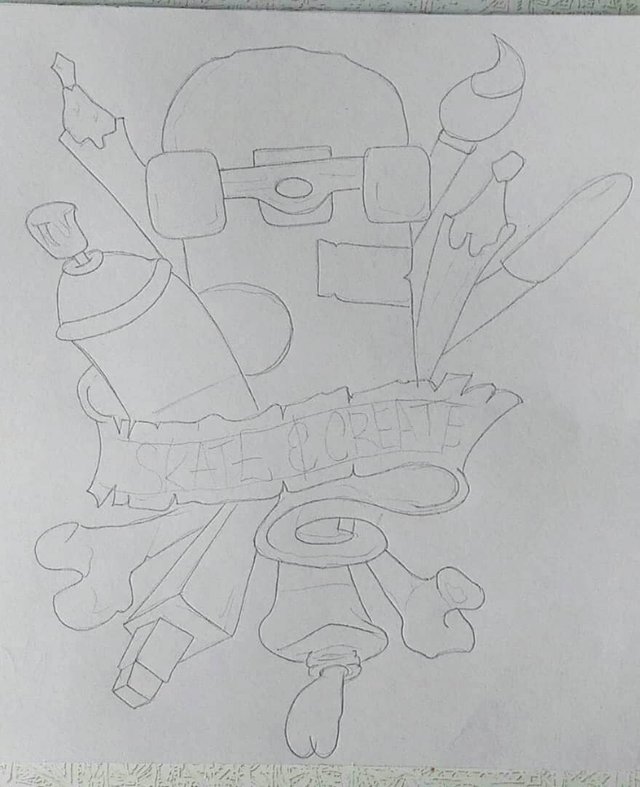
Step 2
We outline the drawing with a marker.
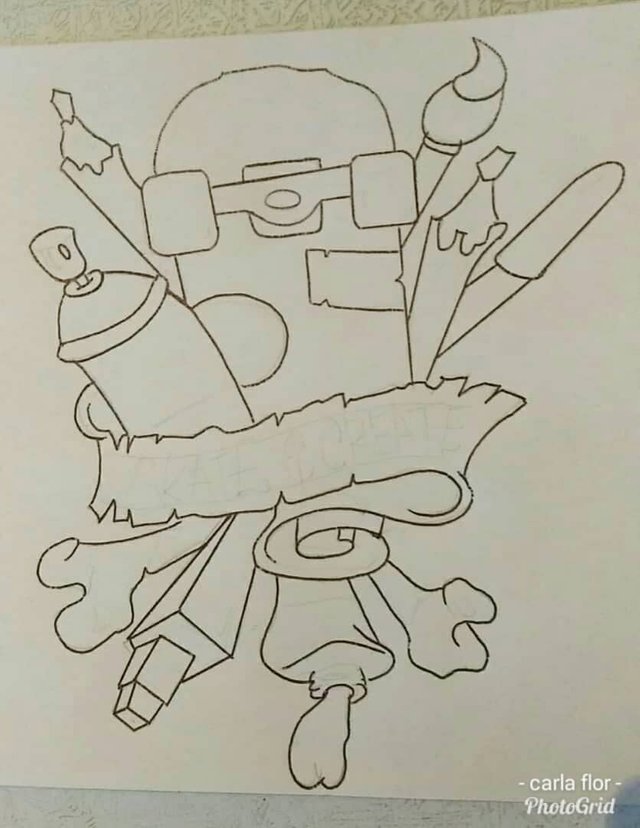
Step 3
We begin to add color to the drawing.
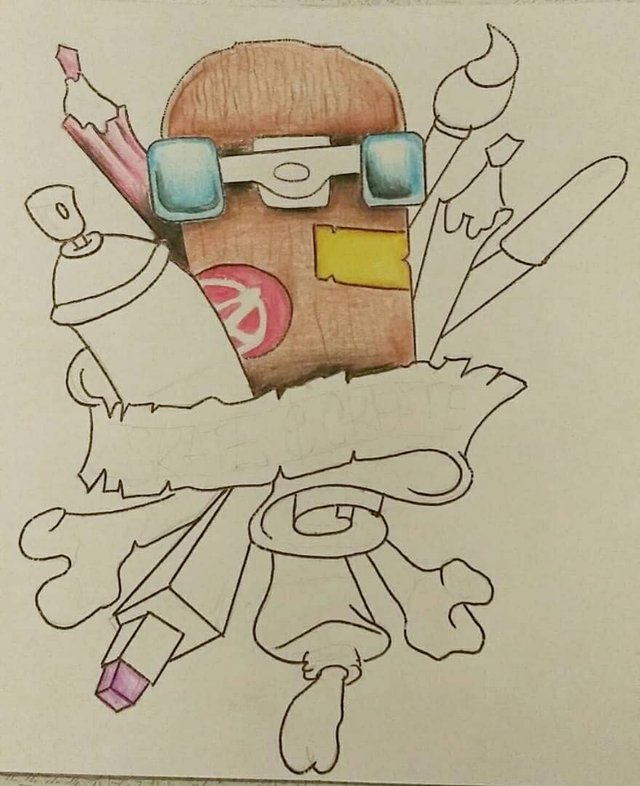
Step 4
Color the rest of the drawing and make the final details.
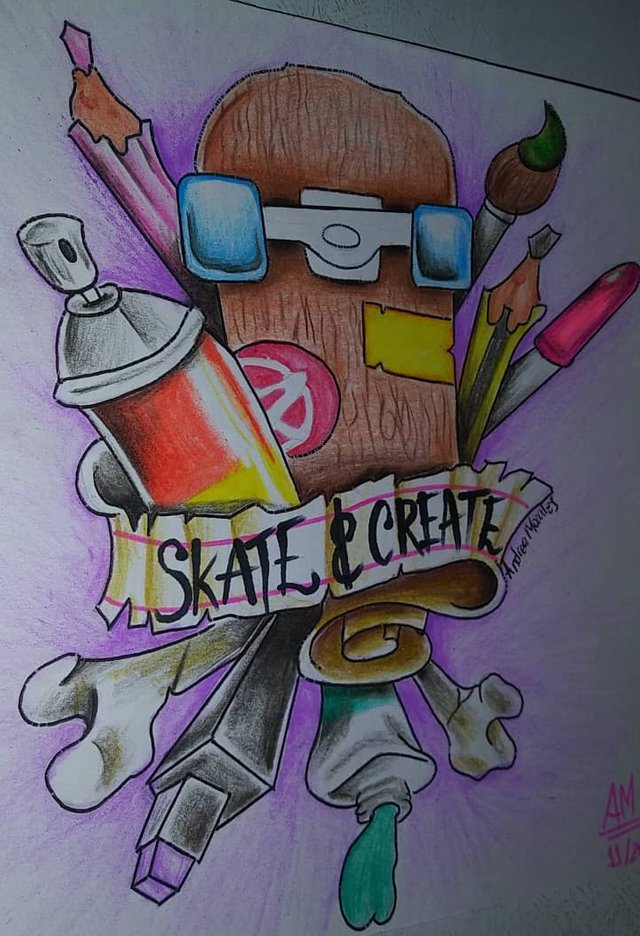
FINAL SCORE

Your post was upvoted by the @art-venture account after manual review and included in Art-Venture magazine. The upvote and support of Art-venture magazine would greatly appreciated!
